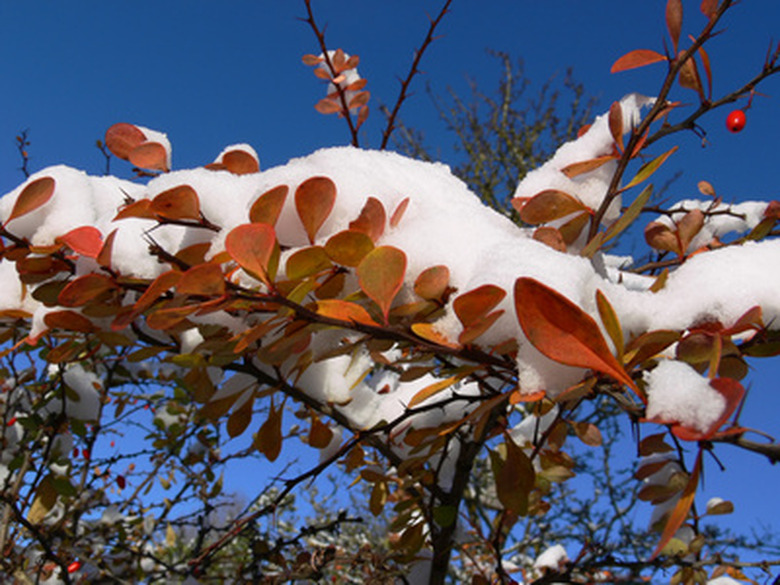How To Care For Barberry
Barberry (Berberis) is a group of shrubs that are used as ornamental features in the residential landscape. Both the foliage and the berries add color and texture. The barberry requires little care when grown in USDA hardiness zones 4 through 8. The most popular barberry is the Japanese, which grows from 3 to 6 feet in height but can be sheared to form a dense hedge. Barberries have thorny branches, so wear thick gloves when working with the plant.
Barberry (Berberis) is a group of shrubs that are used as ornamental features in the residential landscape. Both the foliage and the berries add color and texture. The barberry requires little care when grown in USDA hardiness zones 4 through 8. The most popular barberry is the Japanese, which grows from 3 to 6 feet in height but can be sheared to form a dense hedge. Barberries have thorny branches, so wear thick gloves when working with the plant.
Step 1
Grow the barberry in sun or partial shade. The evergreen species, especially when grown in Southern regions, requires afternoon shade.
- Barberry (Berberis) is a group of shrubs that are used as ornamental features in the residential landscape.
- The most popular barberry is the Japanese, which grows from 3 to 6 feet in height but can be sheared to form a dense hedge.
Step 2
Water the barberry to a depth of 6 inches, and allow the soil to dry completely prior to watering again.
Step 3
Fertilize the barberry bush with a 10-10-10 formula, at the rate listed on the package. Apply the fertilizer in the spring, after all danger of frost has passed. The potassium in the fertilizer will help the barberry fight off fungal infections so the application is vital to the plant's overall care.
Step 4
Spread a fresh 3- to 4-inch layer of mulch around the barberry bush every spring. Don't allow it to touch the base of the bush and spread it on the soil to the farthest reaches of the plant.
Step 5
Prune only overgrown barberry bushes or those being grown as formal hedging. Cut the overgrown bush to within 1 foot of the ground in late winter.
- Water the barberry to a depth of 6 inches, and allow the soil to dry completely prior to watering again.
Step 6
Inspect the barberry bush periodically for signs of insects. Scale and aphids will sometimes attack this plant. Use horticultural oil, at the rate suggested on the product's label, to control infestations.
Grow A Wall Of Barberry Bushes
Choose a site with freely draining soil in a sunny or partially shaded area of your property. Lift and discard any sod, as well as sticks, rocks and other debris. Amend the excavated soil with compost. Position the first barberry bush in the center of the trench, approximately 1 foot from the end. Keep adding soil until the trench is completely filled in and the barberry bushes are steady and stand upright. Create a 2-inch-tall soil berm around the base of each barberry shrub to help direct water onto the roots. Mound the soil in a 10-inch circle around the base of each trunk. Flatten the berm after watering. Wear gloves and use sharp bypass shears when pruning barberries because they are thorny and the twigs are often too tough for smaller anvil shears.
- Inspect the barberry bush periodically for signs of insects.
- Mound the soil in a 10-inch circle around the base of each trunk.
Things Needed
- Garden gloves
- Fertilizer
- Mulch
- Pruning shears
- Horticultural oil
References
- Clemson University Extension: Barberry
- ?\"?Landscape Management:? ?Planting and Maintenance of Trees,? ?Shrubs and Turfgrass";? ?James R.? ?Feucht and Jack D.? ?Butler?; ?1988
- Floridata: Berberis Thunbergii
- University of Missouri Extension: Selecting Landscape Plants: Deciduous Shrubs
- This Old House: How to Plant a Privacy Hedge
